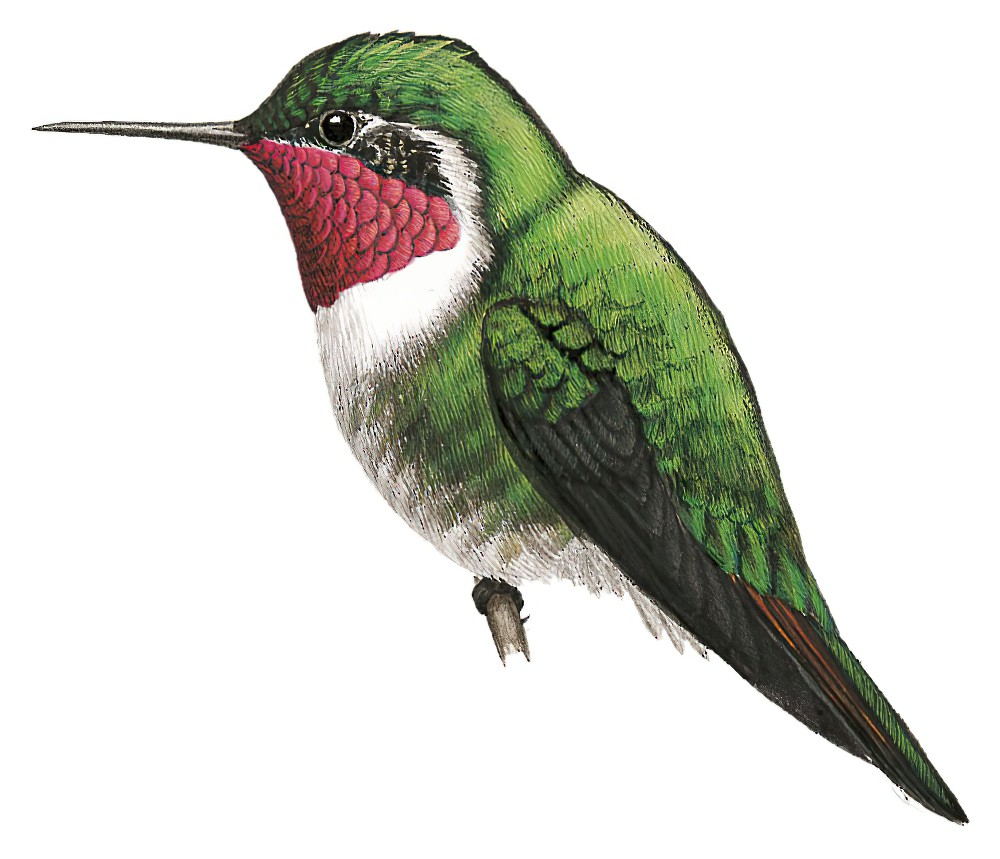Broad-tailed Hummingbird / Selasphorus platycercus

Broad-tailed Hummingbird
SCI Name:
Protonym: Trochilus platycercus Philos.Mag.n.s. n.s., 1 p.441
Taxonomy: Caprimulgiformes / Trochilidae / Selasphorus
Taxonomy Code: brthum
Type Locality: No locality = Mexico.
Author: Swainson
Publish Year: 1827
IUCN Status: Least Concern
DEFINITIONS
SELASPHORUS
(Trochilidae; Ϯ Rufous Hummingbird S. rufus) Gr. σελασφορος selasphoros light-bearing < σελας selas, σελατος selatos light, fire, flame; -φορος -phoros -carrying < φερω pherō to carry; "2. TROCHILUS (SELASPHORUS) RUFUS. (Swainson.) Cinnamon, or Nootka Humming-bird. ... Sub-genus, Selasphorus*, SWAINS. ... *Th. Σελασφορος, splendorem ferens. ... the whole of the chin and throat is covered by scale-like feathers, of a fire-like colour and lustre, equally brilliant with the throat of T. mosquitus, but with more of a red and less of an orange gloss; the tints, however, change in almost every direction of light, and in all are exquisitely splendid. ... The feathers on the sides of the throat are gradually elongated, as they recede from the ears and seem capable of being raised into two tufts." (Swainson 1832); "Selasphorus Swainson, in Swainson and Richardson, Fauna Bor.-Am., 2, 1831 (1832), p. 324. Type, by monotypy, Trochilus rufus Gmelin." (Peters 1945, V, 141).
Var. Selasopherus, Selatophorus, Selosphorus.
Synon. Platurornis, Selasornis, Stellula.
PLATYCERCUS
(Psittacidae; Ϯ Crimson Rosella P. elegans) Gr. πλατυκερκος platukerkos broad-tailed, flat-tailed < πλατυς platus broad; κερκος kerkos tail; "Genus PLATYCERCUS. Rostrum breviusculum, mandibula superiore rotundata, dilata, inferiore brevis, profunde emarginata, apice quadrato, myxa convexa, glabris integra: naribus rotundis, in ceromate angusto medio emarginato, positis. Alæ rotundatæ; remigum, prima excepta, pogonio externo abrupte propre medium emarginato; prima 2da breviore, 5tæ præcipue æquali secunda et tertia longissimis. Cauda lata depressa, subrotundata, gradata; rectricibus apice subrotundis. Pedes, tarsis elevatis; acrotarsiis reticulatis; digitis gracilibus, elongatis; unguibus longis, parum falcatis. Typus genericus, Ps. Pennantii, Lath. The interesting group that forms the present division of the Psittacidæ, is at first sight immediately recognized as distinct from all those which are included under the general name of long-tailed Parrots, and which M. Kuhl has separated as a section with the title of Conurus, by the breadth, depression, and rounded apex of the tail: the greater number of the other groups in the same section having that member narrowed and cuneated. The wings also like the tail are rounded, the first quill feather being shorter than the second; whereas in most of the neighbouring long-tailed groups the first and second quill feathers are of equal length. All the primary quill feathers except the first are marked by an abrupt emargination of the outer web near the middle, which seems peculiar to the present division of the long-tailed Psittacidæ, with the exception of that of Pezoporus, Ill." (Vigors 1825); "Platycercus Vigors, Zool. Journ., 1, 1825, p. 527. Type, by original designation, Psittacus pennantii Latham = Psittacus elegans Gmelin." (Peters 1937, III, 260).
Var. Platycircus, Platycercen.
Synon. Hesperopsittacus, Violania.
platycercus
Gr. πλατυκερκος platukerkos broad-tailed, flat-tailed < πλατυς platus broad; κερκος kerkos tail.
UPPERCASE: current genus
Uppercase first letter: generic synonym
● and ● See: generic homonyms
lowercase: species and subspecies
●: early names, variants, mispellings
‡: extinct
†: type species
Gr.: ancient Greek
L.: Latin
<: derived from
syn: synonym of
/: separates historical and modern geographic names
ex: based on
TL: type locality
OD: original diagnosis (genus) or original description (species)












